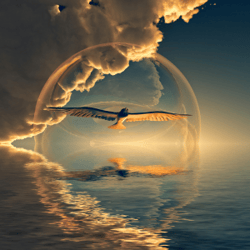 Professor William Barnard, Ph.D. will be giving a talk on “The Religious Use of Psychedelics: The Santo Daime” in the upcoming Pacifica conference “Accessing the Ineffable: Depth Psychology, Religious Experience, and the Further Reaches of Consciousness” on June 19, 2021. This conference will bring together an eclectic group of scholars to investigate to mysterious elements at the foundation of Jungian depth psychology – “consciousness” and the expansive potentialities of a non-local “unconscious.” For more information on this event, please click here. [https://retreat.pacifica.edu/accessing-the-ineffable/] I was delighted to spend time talking with Bill and learning more about his research and experiences.
Professor William Barnard, Ph.D. will be giving a talk on “The Religious Use of Psychedelics: The Santo Daime” in the upcoming Pacifica conference “Accessing the Ineffable: Depth Psychology, Religious Experience, and the Further Reaches of Consciousness” on June 19, 2021. This conference will bring together an eclectic group of scholars to investigate to mysterious elements at the foundation of Jungian depth psychology – “consciousness” and the expansive potentialities of a non-local “unconscious.” For more information on this event, please click here. [https://retreat.pacifica.edu/accessing-the-ineffable/] I was delighted to spend time talking with Bill and learning more about his research and experiences.
Angela: You are a professor of religious studies, and will be presenting a talk on the use of psychedelics in religion, in particular, the Santo Daime, which you describe as “a relatively new religion that emerged out of the Amazon rainforest region of Brazil in the middle of the twentieth century and which now has churches throughout the world; a religion in which a psychedelic brew – ayahuasca – is taken as a sacrament.” For those who are not familiar with ayahuasca, can you tell us the basics of where it comes from, what it is, and how the experience of ingesting would lead people to consider it a sacrament?
Bill: Ayahuasca is made from two separate plants. One is a vine (banisteriopsis caapi) that is understood to carry the masculine force of the cosmos or understood differently, the male energy of the divine. The leaves of another plant (psychotria viridis) are thought to embody the female energy or the female side of the divine. (In the Santo Daime tradition, the divine nature itself is understood to be a fusion of male and female energies.) You bring these two separate energies together in an alchemical cauldron, cooking them together in water. Neither of these two plants, if ingested separately, would have any significant mind-altering affects. That’s what is fascinating for scholars. You need both of these substances to come together to produce this powerful psychedelic drink.
The local shamans have been drinking brews with ayahuasca vine for a long time. They would drink the vine as a way to introduce themselves to the spirits of different plants. In this way, the shamans would mix the ayahuasca vine with another plant to get to know the spirit of that plant. This process (along with a healthy dose of spiritual inspiration) is perhaps how shamans learned about the powerful mind-altering effects that come from a combination of these two plants.
In the Santo Daime tradition, “Daime” means “give me,” as in give me life, strength, health, love. The term itself is a sort of prayer or invocation. “Daime” is also the term used in this tradition for ayahuasca. Drinking the Daime is thought to open doors within you spiritually; doing so allows you to perceive levels of reality that might normally remain veiled from your sight. It can open you spiritually in a beautiful and powerful way. The lovely thing about ayahuasca is that unlike (for example) LSD, you never build up a tolerance; it’s almost as if our bodies and minds respond to ayahuasca as if it’s a key fitting into a lock. Our bodies themselves produce DMT, which is the powerful psychedelic substance that is present in the psychotria viridis leaves, so in a very real sense, when you drink Daime, nothing foreign is being imposed from the outside.
I’m calling my book on the Santo Daime tradition Liquid Light, but originally, I thought of calling it Liquid Grace, since when you drink Daime, it can feel like you are receiving divine grace. So, within this tradition, the Daime itself is considered a sacrament.
Angela: Is there a ritual associated with preparing ayahuasca?
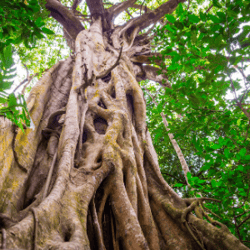 Bill: Yes, there’s a ritual that takes place to create the Daime. The men pound the vines with large wooden mallets, having already drunk some Daime, and as they’re beating the vines, they’re singing hymns, which are a critically important part of the tradition. These are not capriciously made-up hymns. Instead, they emerge from the depths within, from some divine source. There’s a whole collection of these hymns–thousands of them–that have been received by Santo Daime elders, and singing these hymns as they pound the vine or pick the leaves is an integral part of the ritual of making the Daime. In this ritual of making the Daime, whether beating the vines or picking the leaves from the forest, everything is done with a sense of reverence. All of the men raise their mallets at the same time and hit the vine at the same time, singing from their hearts, putting the energy of being present into the liquid itself as it is being made. The understanding is that by putting the male and female energies together with this quality of care and attention, something new emerges, which is the Daime itself, the “divine offspring” of those two substances. In this way, the Daime is said to carry the energy of the Christ consciousness. By imbibing it, the Christ consciousness literally permeates your body. It is a literal communion; it is not just symbolic. In this way, drinking the Daime is about as true a sacrament as you can imagine.
Bill: Yes, there’s a ritual that takes place to create the Daime. The men pound the vines with large wooden mallets, having already drunk some Daime, and as they’re beating the vines, they’re singing hymns, which are a critically important part of the tradition. These are not capriciously made-up hymns. Instead, they emerge from the depths within, from some divine source. There’s a whole collection of these hymns–thousands of them–that have been received by Santo Daime elders, and singing these hymns as they pound the vine or pick the leaves is an integral part of the ritual of making the Daime. In this ritual of making the Daime, whether beating the vines or picking the leaves from the forest, everything is done with a sense of reverence. All of the men raise their mallets at the same time and hit the vine at the same time, singing from their hearts, putting the energy of being present into the liquid itself as it is being made. The understanding is that by putting the male and female energies together with this quality of care and attention, something new emerges, which is the Daime itself, the “divine offspring” of those two substances. In this way, the Daime is said to carry the energy of the Christ consciousness. By imbibing it, the Christ consciousness literally permeates your body. It is a literal communion; it is not just symbolic. In this way, drinking the Daime is about as true a sacrament as you can imagine.
It’s also important to understand the Santo Daime tradition is a hybridic tradition. It brings together and synthesizes various strands of different religious traditions and creates something unique that has its own integrity. It emerged from the rainforest out of the indigenous use of ayahuasca as well as from “vegetalisma,” in which the rubber-tapping people combined indigenous ways of working with ayahuasca while also adding Christian elements. Vegetalismo in this way is a neo-shamanic way of working with ayahuasca.
The founder of the Santo Daime, Mestre (Master) Irineu, was an almost 7-foot-tall black man, the son of former slaves, who left a drought-stricken region in northeastern Brazil to seek his fortune in rubber tapping. In the Amazon rainforest, he ended up becoming exposed to the vegetalista use of ayahuasca, but because he was raised as a Catholic, he made that process more explicitly Christian, even though a central feature of the Santo Daime is reverence for a divine female Being that he called the “Queen of the Forest” and who was eventually also understood as the “Virgin of Conception.”
The Daime is a Christianization of a neo-shamanic tradition, but you also have strong African elements, especially the tradition of the Orishas, Gods and Goddesses such as Yemanja, the Queen of the Sea, who are divinizations of the forces of nature. Many Santo Daime hymns revere nature and there is a really deep reverence for nature in this way. And there is also an esoteric dimension to the Santo Daime that emerges from the Esoteric Circle of the Communion of Thought, a theosophical group in Brazil that drew upon Spiritism, yoga, and other esoteric sources. The Santo Daime was affiliated with the Esoteric Circle in the 60s, leading to a belief in reincarnation, as well as the understanding that each of us has a divine Source, and that one of the most profound goals of spiritual life is to wake up to our divine nature.
Angela: Ayahuasca has gained a certain presence in the United States, or at least a fair number of people are aware of it in California. I don’t know of anyone who undertakes that experience for the sake of recreation. Is the nature of a sacrament or an internal journey that you must purify in some way before you cross the threshold into internal or divine wisdom? I’m speaking in particular of the physical symptoms ayahuasca invokes that most people would associate with a sudden bout of food poisoning.
Bill: I’ve been drinking Daime since 2005. In the beginning, I was warned it tasted awful. But when I first drank it, I thought it wasn’t so bad, sort of sweet. But with the second serving, I had a strong reaction, almost as if I couldn’t bear it. I also struggled with nausea in the beginning. But my sense now is that our body and mind, including our energetic or subtle body, are adapted to the vibratory level of our reality here. And the Daime wants to upgrade you. It seeks to raise your vibratory level in a pretty forceful way. And that may sound great intellectually, but when push comes to shove, when the Daime hits, there can be a tendency to brace against it. It’s almost a knee jerk reaction to want to tighten up against that Force, which feels so strong and wants to open you up, almost on a cellular level. What I began to notice is that the more I tightened up, the more I was inclined toward nausea. But the more that I said yes to that Force, the less nausea would happen, and the more I began to feel at ease with the state of consciousness that is generated by the Daime. To me it’s a type of subtle body rewiring that happens over time. You begin to trust the process more.
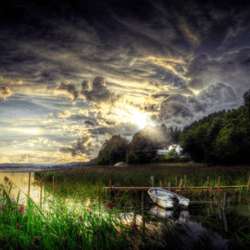 There is also a purificatory process that takes place when you work with the Daime. The Energy and Light of the Daime, its redemptive Force, helps us to release and transform any negativity or contractions–the psychological or subconscious material that obscures our connection to the divine. Often during the ritual, this purificatory process can be difficult, there can be a lot of suffering, because of this subconscious psychological material coming to the surface to be released and transformed. But within the Santo Daime, it is thought that this suffering is not just psychological. Instead, at least at times, the suffering you’re experiencing is something that you’re taking on from the “suffering spirits,” who are spirits of dead human beings who are attached to this world and haven’t moved on. In the Santo Daime tradition (at least in its most well-known and widespread lineage), some people take on the job of assisting these suffering spirits to move on spiritually. This is a process of mediumship, in which certain daimistas are willing to let the energy of a suffering spirit enter into their body/mind. Then, the Daime that’s within the medium as well as the divine Light that accompanies that healing process are there to help that suffering being to let go of its agony, fear, anger, etc. and move on. In the Santo Daime, this mediumistic work is seen as “giving charity” because when you’re doing that as a medium, you feel that suffering yourself, even if, at the same time, you’re filled with, and experiencing, the unconditional Love of the Beings of Light. It’s a beautiful process but it can also be a bit perturbing at first. You may not understand why people are expressing so many cathartic reactions, such as weeping or yelling.
There is also a purificatory process that takes place when you work with the Daime. The Energy and Light of the Daime, its redemptive Force, helps us to release and transform any negativity or contractions–the psychological or subconscious material that obscures our connection to the divine. Often during the ritual, this purificatory process can be difficult, there can be a lot of suffering, because of this subconscious psychological material coming to the surface to be released and transformed. But within the Santo Daime, it is thought that this suffering is not just psychological. Instead, at least at times, the suffering you’re experiencing is something that you’re taking on from the “suffering spirits,” who are spirits of dead human beings who are attached to this world and haven’t moved on. In the Santo Daime tradition (at least in its most well-known and widespread lineage), some people take on the job of assisting these suffering spirits to move on spiritually. This is a process of mediumship, in which certain daimistas are willing to let the energy of a suffering spirit enter into their body/mind. Then, the Daime that’s within the medium as well as the divine Light that accompanies that healing process are there to help that suffering being to let go of its agony, fear, anger, etc. and move on. In the Santo Daime, this mediumistic work is seen as “giving charity” because when you’re doing that as a medium, you feel that suffering yourself, even if, at the same time, you’re filled with, and experiencing, the unconditional Love of the Beings of Light. It’s a beautiful process but it can also be a bit perturbing at first. You may not understand why people are expressing so many cathartic reactions, such as weeping or yelling.
Angela: People take eco-tours to the Amazon jungle and seek out “shamans” who will give them that experience. There is the aspect of American tourism that has brought awareness of this plant to us. How does that relate or interact with Santo Daime as a religion?
Bill: That’s something I’ve thought about quite a lot. I personally have mixed feelings about it. Ayahuasca tourism is a complicated subject. On the one hand, it’s beautiful that people have the longing to go deeper within, and they feel there’s wisdom in these traditions and want to explore them. And in many ways, ayahuasca tourism helps to revitalize the economy of the people they are visiting. But on the other hand, that tourism can also create a capitalistic mentality that can disrupt the culture there, and create economic imbalances that weren’t there before. But the Santo Daime is quite different. For daimistas, drinking Daime isn’t something they do just for a one- or two-week retreat (as beautiful and powerful as that might be). Instead, they typically do it within their own country, and they do so as part of their religion. They drink Daime in a structured, ongoing way as part of their spiritual life, with a sustained community of people that they’re sharing these experiences with.
In the Santo Daime, you take a sacrament over and over again, within a liturgical structure that you aren’t making up. You don’t get to make up the rules, and there might even be parts of the tradition you don’t like. For example, for the first few years I was really turned off by some of the Christian imagery in the hymns. My spiritual background had been primarily yogic and meditative. And while the Santo Daime does have a focus on meditation (one of its central rituals involves long periods of silent meditation), nonetheless, you are meditating with a group of people who are wearing uniforms, and you’re doing it on a certain day, in a ritual that lasts for a certain period of time, and you’re also saying prayers out loud, and so on. The whole process is quite structured. You aren’t just making it up as you go along. And there’s a lot of learning that can comes from being part of a religious structure. It can be wonderful to say “I’m spiritual but not religious.” But there’s also a beauty that comes from having a tradition and working within that ritual structure.
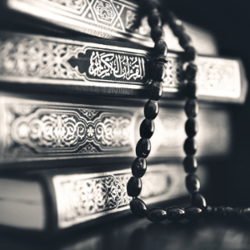 Angela: Icaros, or songs, play a large role in the western experience of ayahuasca. Is that so in Santo Daime and what is the function of those songs? Is this any comparison to a medieval person listening to a choir sing in Chartres Cathedral with the incredible acoustics and the stained glass bringing some sense of the otherworldly?
Angela: Icaros, or songs, play a large role in the western experience of ayahuasca. Is that so in Santo Daime and what is the function of those songs? Is this any comparison to a medieval person listening to a choir sing in Chartres Cathedral with the incredible acoustics and the stained glass bringing some sense of the otherworldly?
Bill: Icaros are not the same as hymns in the Santo Daime. Icaros come from the vegetalista tradition and are songs that have been given to a shaman by the spirits. With ayahuasca, singing and songs are almost always really crucial, but within the vegetalista tradition, the shamans (and their assistants) sing the icaros during the ceremonies, while the participants lie down in the dark silently, receiving that sonic vehicle that carries the energy. In the Santo Daime tradition, everyone sings together; it’s a choral experience. There is no one shaman figure. Although there is a leader of the work, nonetheless, in a very real sense, everyone is a shaman. Everyone is an equal participant. It’s a co-created event.
Angela: Do the ceremonies take place in a certain environment or type of building?
Bill: Usually the ceremonies take place inside a building, although there are certain ceremonies that take place outside. Even if the ritual takes place in a building, it is still ideally surrounded by nature. Daimistas respect the power of communing with nature. In the ritual space (called the salão), there’s usually a central altar table that the head people sit at, along with the musicians. One half of the salão is the men’s side, the other half is the woman’s side. The energy that is created by the interaction between the male and female energies circulates round and round the central table. The salão is explicitly understood to be a sort of alchemical space in which a powerful energy current circulates. And in the center of the altar there is a specific sort of cross that has a second horizontal bar, which signifies the coming of the Christ consciousness within each person who drinks the Daime, that symbolizes each of us awakening to our divine nature.
Angela: Holding plant intelligence as a component to the sacred, the mystic, may naturally lead back to concerns about our planet’s well-being, how we treat the non-human aspects of the world (i.e., the animal and the plant worlds). This is a topic that concerns most of the scholars at Pacifica, the nature of the psyche including the natural world, and the importance of the way in which we treat the natural world. Is the sacred nature of plants a path to heal our wounded relationship with the natural world or is that outside the scope of Santo Daime?
Bill: The most prominent line of the Santo Daime is centered around an eco-village deep in the Amazon rainforest. And there’s a clear ecological intentionality that emerges from the theology of the Santo Daime, because its deep reverence for the natural world. Daimistas are keenly aware that the sacrament emerged from the plant kingdom, and in order for their religion to flourish, that natural beauty and force needs to thrive, so reverence for nature is a critically important part of the Santo Daime tradition.
And although the Santo Daime is very much a mystical Christian tradition, it is quite likely that some people in the U.S. would say that it is not Christian. For most daimistas, the tradition and the teachings are carried through the hymns, because most of the early daimistas didn’t read or write. And in the hymns, there is so much emphasis on the beauty and sacredness of the natural world. Most of the visionary experiences that take place when you drink the Daime typically happen with your eyes shut. You can experience this profound unfolding of beauty, or you can be carried to other dimensions, or meet different kinds of spiritual beings. But with your eyes open, a common visionary experience that can occur after drinking the Daime is a transfiguration of the world, especially the natural world, where everything shines with a type of divine presence. So, for me, one of the clearest transformative effects of drinking the Daime is an opening of your capacity for perceiving the beauty of the natural world. You no longer see the natural world in the way we’ve been taught by our dominant culture, that is, as an object for our use. Instead, you begin to perceive nature as permeated with consciousness and spirit.
Angela: At the heart of most religious experiences is usually a sense of reaching or touching the divine, even if just for a moment, of transcending your own humanity and glimpsing something eternal and cosmic. Would you say that this and the function of psychedelics are fairly similar, and is this the concept of “accessing the ineffable” that titles the Pacifica workshop you will be presenting at in March represents?
Bill: There is certainly a hand and glove fit, in that “accessing the ineffable” represents a profound human longing to have these experiences of being in touch with, or being touched by, some deeper divine source. And drinking ayahuasca can certainly facilitate that. Nonetheless, drinking ayahuasca is clearly not the only powerful spiritual path. Most of my Santo Daime friends are also into yoga, meditation, ecstatic dance, the whole gamut of “how can we access the ineffable?” But partaking in this kind of sacrament with reverence, humility, and openness can be extremely beautiful and can jump-start and energize your spiritual life.
Angela: Do you see Santo Daime as intersecting with the field of American psychology?
Bill: I’d like to think that any profound spiritual path will help to transform a person psychologically, not just the Santo Daime. So, anyone going deep within will have to work with what’s discovered within, which is usually a complicated fusion of subconscious material and divine light. Speaking for myself, I deeply value the psycho-therapeutic transformations that have come about through my participation within the Santo Daime. And I also think there’ s a role, especially in certain periods of our spiritual life, for working carefully with a trained and open-minded therapist. It can be helpful to have a skilled professional to work with outside of the ritual context. I’m a big fan of integrating the two. But at the same time, I think there’s a quality and depth of spiritual transformation that is possible when you’re drinking Daime in a traditional ritual structure, having regular powerful spiritual experiences, within a community of people who you’re deepening your connection to. These types of shared experiences have the potential to work on the human ego, and to catalyze profound psycho-spiritual transformations.
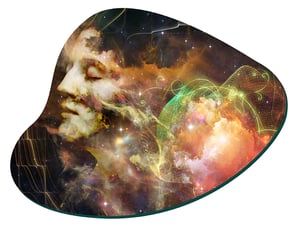 Angela: What are you most looking forward to in the conference?
Angela: What are you most looking forward to in the conference?
Bill: I’m always in favor of opportunities for people to talk about things that really matter and to go deep with each other. And this conference seems like an opportunity for that chemistry or magic to happen. When open-hearted and clear people want to explore the depths of who they are and what reality is, when they share their hearts, ideas, and experiences, there’s a magic that can happen. I look forward to that.
Accessing the Ineffable: Depth Psychology, Religious Experience, and the Further Reaches of Consciousness event is taking place June 2021. For more information and to register, visit our website https://retreat.pacifica.edu/accessing-the-ineffable/
 William Barnard, Ph.D., is a Professor of Religious Studies, as well as a University Distinguished Teaching Professor. His primary areas of research interests are the comparative philosophy of mysticism, contemporary spirituality, religion and healing, and consciousness studies. Professor Barnard is currently researching the Santo Daime tradition, a syncretistic, entheogenically-based new religious movement that emerged in Brazil in the mid-twentieth century. Professor Barnard is the author of Living Consciousness: The Metaphysical Vision of Henri Bergson as well as Exploring Unseen Worlds: William James and the Philosophy of Mysticism, both published by State University of New York Press. In addition, Professor Barnard is the co-editor of Crossing Boundaries: Essays on the Ethical Status of Mysticism. Professor Barnard has also written many journal articles and book chapters on a variety of topics, such as pedagogy in religious studies, the nature of religious experience, issues in the psychology of religion, and most recently, entheogenic religions and spirituality.
William Barnard, Ph.D., is a Professor of Religious Studies, as well as a University Distinguished Teaching Professor. His primary areas of research interests are the comparative philosophy of mysticism, contemporary spirituality, religion and healing, and consciousness studies. Professor Barnard is currently researching the Santo Daime tradition, a syncretistic, entheogenically-based new religious movement that emerged in Brazil in the mid-twentieth century. Professor Barnard is the author of Living Consciousness: The Metaphysical Vision of Henri Bergson as well as Exploring Unseen Worlds: William James and the Philosophy of Mysticism, both published by State University of New York Press. In addition, Professor Barnard is the co-editor of Crossing Boundaries: Essays on the Ethical Status of Mysticism. Professor Barnard has also written many journal articles and book chapters on a variety of topics, such as pedagogy in religious studies, the nature of religious experience, issues in the psychology of religion, and most recently, entheogenic religions and spirituality.
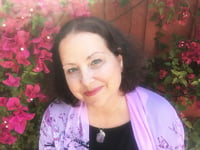 Angela Borda is a writer for Pacifica Graduate Institute, as well as the editor of the Santa Barbara Literary Journal. Her work has been published in Food & Home, Peregrine, Hurricanes & Swan Songs, Delirium Corridor, Still Arts Quarterly, Danse Macabre, and is forthcoming in The Tertiary Lodger and Running Wild Anthology of Stories, Vol. 5.
Angela Borda is a writer for Pacifica Graduate Institute, as well as the editor of the Santa Barbara Literary Journal. Her work has been published in Food & Home, Peregrine, Hurricanes & Swan Songs, Delirium Corridor, Still Arts Quarterly, Danse Macabre, and is forthcoming in The Tertiary Lodger and Running Wild Anthology of Stories, Vol. 5.



